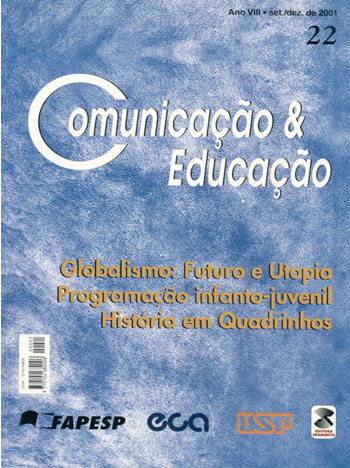Ethics and aesthetics of child and juvenile programming
DOI:
https://doi.org/10.11606/issn.2316-9125.v0i22p37-45Keywords:
communication, mythologies, television fiction, Monteiro LobatoAbstract
In this text, an essay in character, the author aims at examining the communication products that are not only dedicated to fun and entertainment, but that work as teaching devices. Specifically, a discussion is brought up around the curiosity relationship there is between the media and kids. We recover a few portions of a survey that engendered a doctoral thesis in Social Sciences entitled As imagens dionísicas no contexto da cultura de massa – uma interpretação estética da ficção televisiva brasileira (Dionysiac images in the mass culture context – an aesthetic interpretation of the Brasilian television fiction). Prof. Michel Maffesoli was the advisor of thesis, defended in Sorbonne in winter 1995. This article proposes a debate on the inter-textual relationships between literature and television, and then it simulates a reflection on the ethics and aesthetics of the television fiction and, finally, it puts Monteiro Lobato’s work, O sítio do pica-pau amarelo (the yellow Woodpecker’s farm – adapted for television) into perspective and discusses the problems of enchantment, harassment, and possible clarification of the child and juvenille public when confronted with the electronic media.
Downloads
Downloads
Published
Issue
Section
License
I authorize the publication of the submitted article and soon the copyrights to the magazine, in the printed and electronic version, if it is approved after the evaluation of the reviewers.
I understand that readers may use this article without prior request, provided the source and authorship are mentioned. Readers are not authorized to use this article for reproduction, in whole or in part, for commercial purposes.

































